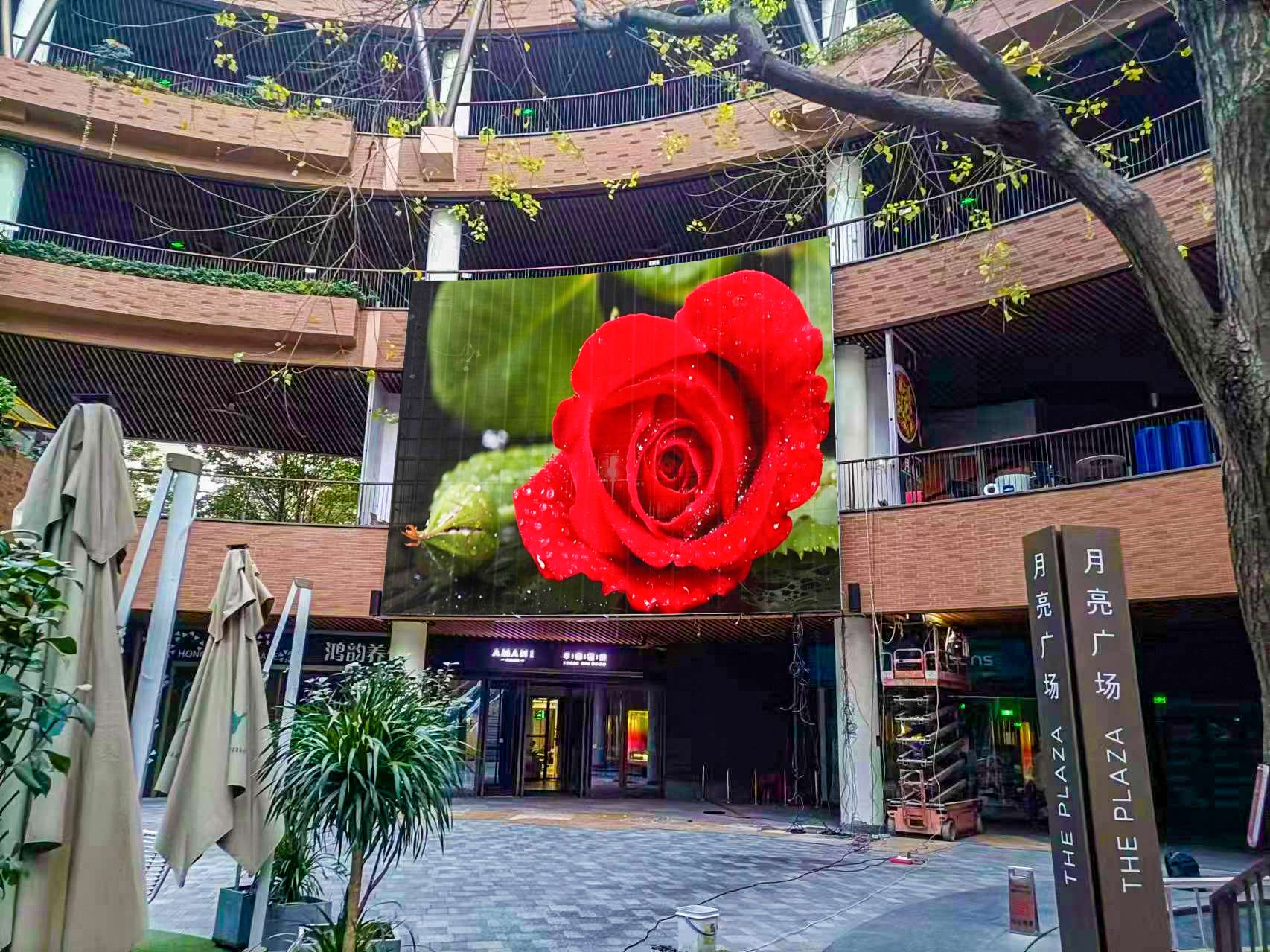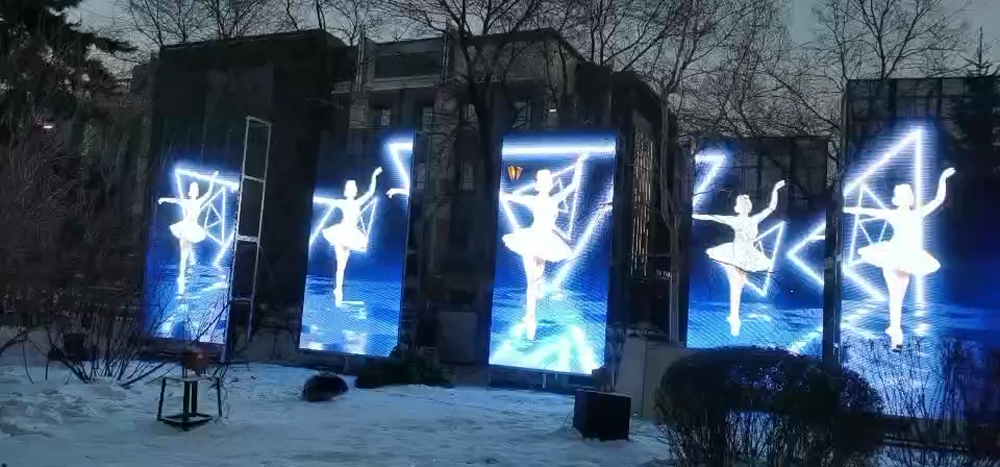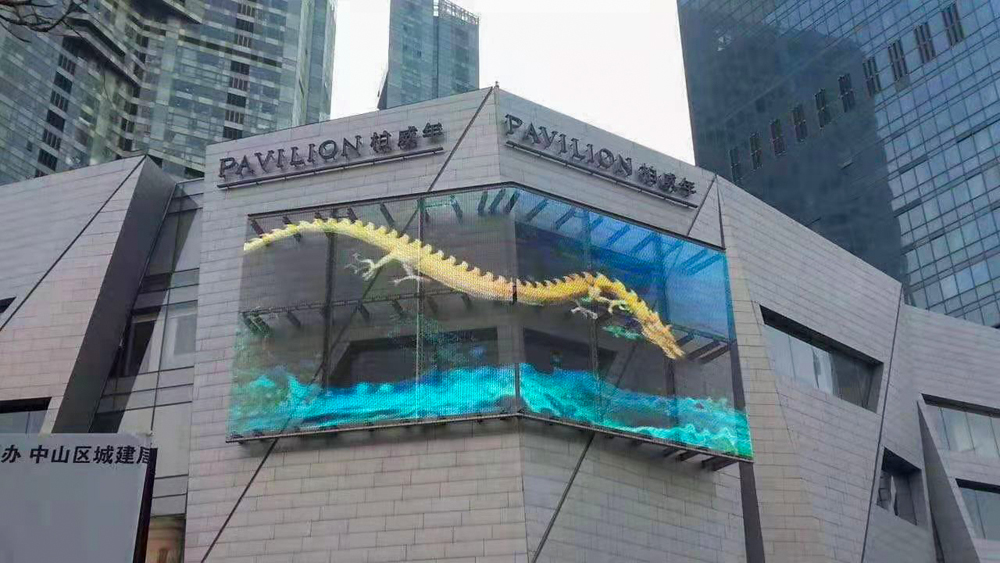NEWS
New Products
Understanding Transparent LED Screens: Key Benefits and Features
2024-09-06In today’s digital era, transparent LED screens are emerging as a cutting-edge display technology that offers both functionality and aesthetic appeal. These screens provide a unique blend of high-quality visual display and transparency, allowing viewers to see content clearly while still being able to see through the screen. Transparent LED screens are revolutionizing the way brands engage with audiences, particularly in retail spaces, office buildings, and entertainment venues.
This article explores the key benefits and features of transparent LED screens, and how they can elevate your display strategy to the next level.

1. What is a Transparent LED Screen?
A transparent LED screen is a display technology that uses light-emitting diodes (LEDs) to create images and videos, while maintaining a see-through effect. This unique feature makes it ideal for environments where visual impact and maintaining openness are both important.
The transparent design allows businesses to deliver vibrant content without blocking natural light or obstructing the view of the background, making it a versatile choice for modern displays.
2. Benefits of Transparent LED Screens
Transparent LED screens offer a wide range of benefits that traditional display technologies cannot match. Here are some of the most notable:
High Transparency: These screens can achieve transparency levels of up to 70-90%, ensuring that natural light passes through while content is displayed. This creates an open, airy, and interactive environment.
Creative Flexibility: The design flexibility of transparent LED screens allows them to be customized in size, shape, and installation method. Whether you want to create a large storefront display or integrate it into a curved architectural feature, transparent LED screens offer endless creative possibilities.
Energy Efficiency: Transparent LED screens consume significantly less energy compared to other display technologies like LCD or plasma screens. This energy-saving benefit is crucial for businesses looking to reduce operational costs and promote eco-friendly practices.
Lightweight and Slim Design: Transparent LED screens are known for their slim profiles and lightweight design, making them easier to install without requiring heavy structural support. This allows them to blend seamlessly into any environment.

3. Common Applications of Transparent LED Screens
Retail Spaces: Transparent LED screens are frequently used in retail stores to create dynamic window displays that attract the attention of passersby while still allowing natural light to enter the store. These displays can be used to showcase promotions, products, and branding in a highly engaging way.
Corporate Offices: Transparent LED screens can be installed in office lobbies or conference rooms to display company information, videos, or interactive content, enhancing the overall ambiance of the workplace.
Museums and Exhibitions: Transparent LED screens can provide an immersive experience in museums, exhibitions, and trade shows, enabling creative presentations without blocking the view of the surrounding environment or exhibits.
Entertainment Venues: In concert halls, theaters, or sports arenas, transparent LED screens provide stunning visuals while maintaining a clear view of the stage or field, enhancing the audience's experience.

4. How to Choose the Right Transparent LED Screen
When selecting a transparent LED screen, several factors should be considered to ensure the best fit for your project:
Transparency Level: Depending on the application, you can choose the appropriate transparency level to balance content visibility and see-through clarity. For retail windows, higher transparency may be preferred to maintain the open feel of the space.
Brightness: The brightness level should be suitable for the ambient lighting conditions. Indoor transparent LED screens typically require lower brightness levels (around 1500-3000 nits), while outdoor screens may need higher brightness (3500 nits or more) to ensure visibility in sunlight.
Resolution: The pixel pitch, which determines the resolution, is an important factor for transparent LED screens. A smaller pixel pitch provides a higher resolution, making the screen suitable for close viewing distances, while a larger pixel pitch is ideal for displays viewed from farther away.
Customization Options: Depending on your space, you may need a transparent LED screen that can be customized in size, shape, and installation method to fit your unique design needs.

6. Elevate Your Marketing and Communication with Transparent LED Screens
Transparent LED screens are a game-changer for businesses seeking to enhance their marketing and communication strategies. These screens not only captivate audiences with stunning visuals but also maintain the integrity of open spaces, allowing for creative and functional displays that can drive brand engagement and customer interaction.
Whether you’re looking to transform your storefront, upgrade your office space, or create an immersive exhibition, transparent LED screens provide the versatility and innovation needed to make a lasting impression.
Conclusion
As a modern, visually appealing, and highly effective display solution, transparent LED screens offer numerous advantages over traditional displays. By carefully considering factors such as brightness, transparency, and customization, you can choose the perfect transparent LED screen for your specific application. With ELIKEVISUAL expertise in transparent LED technology, your brand can leverage this cutting-edge solution to create impactful, engaging, and interactive experiences for your audience.
To explore how transparent LED screens can transform your business or project, contact ELIKEVISUAL today for professional advice and tailored solutions.
Contact us at:
T: +86 755 27788284
Email: [email protected]
Instagram: https://www.instagram.com/elikevisual/
Tiktok: https://www.tiktok.com/@sharlkngv7e
https://www.tiktok.com/@elike53
https://www.instagram.com/reel/C_kSZpatNAX/






